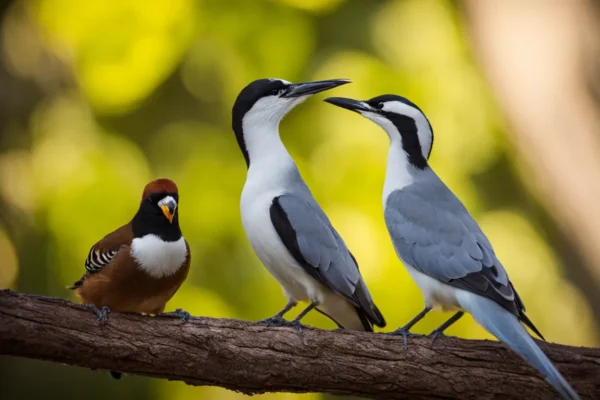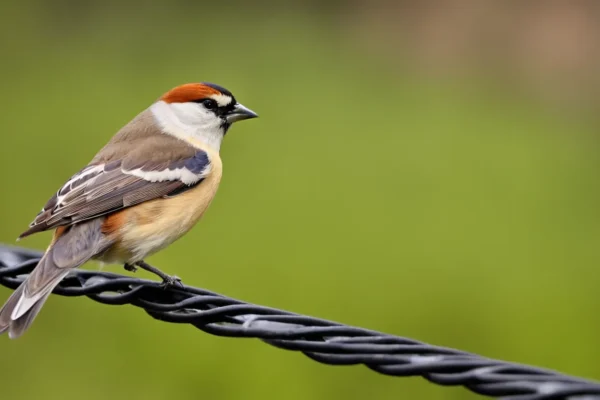The whistling pig, often called a groundhog, and woodchucks aren’t particularly beloved by the public. Even though they are charming squirrels, there is a story that they are rather invasive when it comes to farms, gardens, and places where plants and vegetables are grown. They are really there to ruin nature, not to appreciate it for what it is, which is a wonderful abundance.
Aside from their intrinsic tendency to behave like rodents, groundhogs are really rather intriguing creatures, having a number of closely related relatives that are seldom discussed. In order to go over the negativity and attempt to comprehend these little animals, we will investigate and learn more about the relatives of groundhogs. Are they more into the “demolish everything” type of atmosphere, or do they like to relax, swim in rivers, and explore forests? Now let’s get going and find out for ourselves!
Animals That Are Like Groundhogs:
Marmots

The cutest rodents from the same family as squirrels, marmots, are the closest cousins of groundhogs. Because of their close family, groundhogs and marmots have a lot of looks and probably behavior in common. Similar to groundhogs, marmots have short legs and robust bodies, making them relatively tiny.
They often have a reddish-brown to gray appearance, which makes them ideal for hiding. Not to mention their powerful claws, which allow them to remove almost anything. Marmots are really so skilled diggers that they have a reputation for creating vast subterranean networks for migration, habitation, and hibernation.
These gregarious mammals behave similarly to groundhogs, creating tight-knit family units and warning others of impending danger by whistling loudly. Furthermore, it is well known that groundhogs and marmots can accurately forecast seasonal shifts since they hibernate all winter long. Although they are found all throughout the United States, marmots are most common in Alaska, California, Colorado, Utah, and Washington.
Prairie Dogs

The prairie dog family is another fascinating related group of groundhogs. These fascinating animals are indigenous to North America’s grasslands, especially the western and central sections. Strong claws for digging, a short tail, and a sturdy body all help prairie dogs adapt to their open surroundings.
Prairie dogs are very gregarious creatures that inhabit complex, multi-mile subterranean communities. Like marmots, prairie dogs have complex communication systems inside these networked tunnels. They use a range of vocalizations and gestures to alert other colony members to possible hazards.
The intricate jump-yip show, in which the prairie dog leaps into the air while making high-pitched sounds, is one of the most fascinating features of their activity. This warns other colony members of possible threats by acting as an alarm signal. As was already established, groundhogs and marmots exhibit comparable alert behaviors. Both species convey possible hazards to one another by piercing whistles.
Beavers

Probably the most diligent and hardworking relatives of groundhogs are beavers. Beavers, who are referred to as “nature’s engineers,” are among the animals that have an incredibly profound effect on the natural world and their surroundings. They possess a remarkable talent for crafting, or rather building, elaborate dams and lodges out of mud, twigs, pebbles, and other useful materials. They essentially build ponds and wetlands by carefully rerouting streams using the branches of trees.
One may wonder why beavers act in this way. Well, beavers don’t really feel secure on the ground, in contrast to their relatives that were previously stated. So they make a secure refuge for themselves in the water. However, the surrounding ecology and other creatures also gain from this, in addition to them.
Even when we watch beavers, we can’t help but notice that their behavior is predetermined. Although they resemble groundhogs in appearance, beavers may be distinguished from their relatives by their webbed hind feet and unique eyelids (a transparent membrane called the nictitating membrane that functions as swimming goggles) that let them feel more at ease in the water.
Gophers

The main reason groundhogs and gophers are often confused with one another is because of how similar they look and behave. However, there are a few distinctions between these nations that need discussion. They are tiny, rodent-like animals that like digging, much like groundhogs. They weigh quite little, have coarse brown hair, and have teeth that have a yellow tint.
Now, the so-called cheek pouches are where groundhogs and gophers diverge first. Like squirrels, gophers utilize their expanding cheek pouches—which are located within their mouths—to store, collect, and move substantial quantities of food.
Another distinction is that, in contrast to groundhogs, gophers have solitary lives; in fact, each gopher has its own system of burrows. The gopher loners don’t have subterranean tunnel networks as other relatives have, which allows them to essentially interact. However, they will sometimes come to the surface to search for partners or to gather food.
Capybaras

Our favorite cousins, the capybara, are groundhogs. These amiable, submissive, and very calm rats are amazing in every manner. They are very gregarious creatures in addition to being the biggest rodents on the planet. Family groupings of up to thirty capybaras are home to capybaras. They take care of one another, form bonds with one another and other animals, and have very strong social bonds as a whole.
As we previously discussed, capybaras are huge animals with barrel-shaped bodies, short legs, and blunt muzzles. They can easily tolerate frigid temperatures and are excellent swimmers because to their thick hair and webbed feet. Nonetheless, capybaras really like relaxing in warm climates with plenty of vegetation and, ideally, citrus. Citrus-speaking, capybaras mostly consume grasses, water plants, and fruits.
For a variety of reasons, capybaras spend a lot of time in or near water. Yes, they like hanging out by the water, but it also gives them food and protects them from predators. With their eyes and nose positioned on top of their heads, these incredibly adaptive animals can stay immersed in water for up to several minutes while maintaining awareness of their surroundings.
People love capybaras so much that some have even tamed them for pet ownership. We enjoy them even more because we often see them interacting with other species, including birds and turtles, who help to maintain balance in their environments.
Squirrels’

Another relative of the well-liked groundhogs is the squirrel. These rodent-like animals are so incredibly charming and nimble that they are loved and known all around the globe. You may find these little to medium-sized rodents almost anywhere since they have evolved to live in a variety of settings, such as urban areas, woods, and forests.
During the winter months, squirrels use their characteristic bushy tails for warmth, balance, and communication. Squirrels are skilled climbers that can move very easily between tree trunks and branches thanks to their keen claws and nimble paws. They eat a wide variety of foods, including fruits, nuts, seeds, and even insects or bird eggs.
Because they store food for later use, squirrels are also skilled at obtaining food. They are well-known for burying acorns and other food items. They carry and store nuts in their inflatable cheek pouches, much like gophers, to be consumed later. Squirrels are a lovely sight in parks and gardens because of their energetic and acrobatic movements and playful temperament. They have also become a popular and iconic emblem of nature, appearing in everything from blockbuster movies to children’s books.
Hyraxes

When it comes to looks and behavior, hares are quite similar to groundhogs, even though they are not related to them. These little animals are rare in the United States since they are native to Africa and the Middle East. However, their short legs, thick bodies, and characteristic groundhog-like faces are what unite them with their relatives.
Hyraxes are mostly nocturnal animals that live in savannas and wooded areas. They are skilled climbers, much like groundhogs, navigating difficult terrain with their powerful limbs and keen claws. Renowned for their distinct dental architecture, hyraxes have incisors that develop continuously, like those of rats.
Similar to groundhogs, hyraxes are very gregarious animals, and interacting with other hyraxes is crucial to their survival. These creatures live in tiny family groups and use a mix of scent marks and vocalizations to communicate. In order to define their territory, they also have common defecation areas, or “middens,” where they dump their excrement.
Final Thoughts
Groundhog Cousins are amazing, are they not? We hope you’ve had as much fun as we did discovering these amazing animals. This is not only a fantastic method to learn more about animals, but it also advances our understanding of the natural world’s functioning and interconnectedness. These groundhog relatives demonstrate the amazing adaptations and habits adopted by burrowing animals, ranging from the hyraxes of Africa to the prairie dogs of the plains and the alpine marmots.
We may learn more about the intricate details of animal life by investigating and examining the physical characteristics, habitats, and social relationships of these creatures. Though they are undoubtedly damaging your garden right now, we hope this article will encourage you to do further study and learn to love and respect groundhogs.





